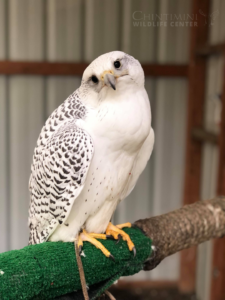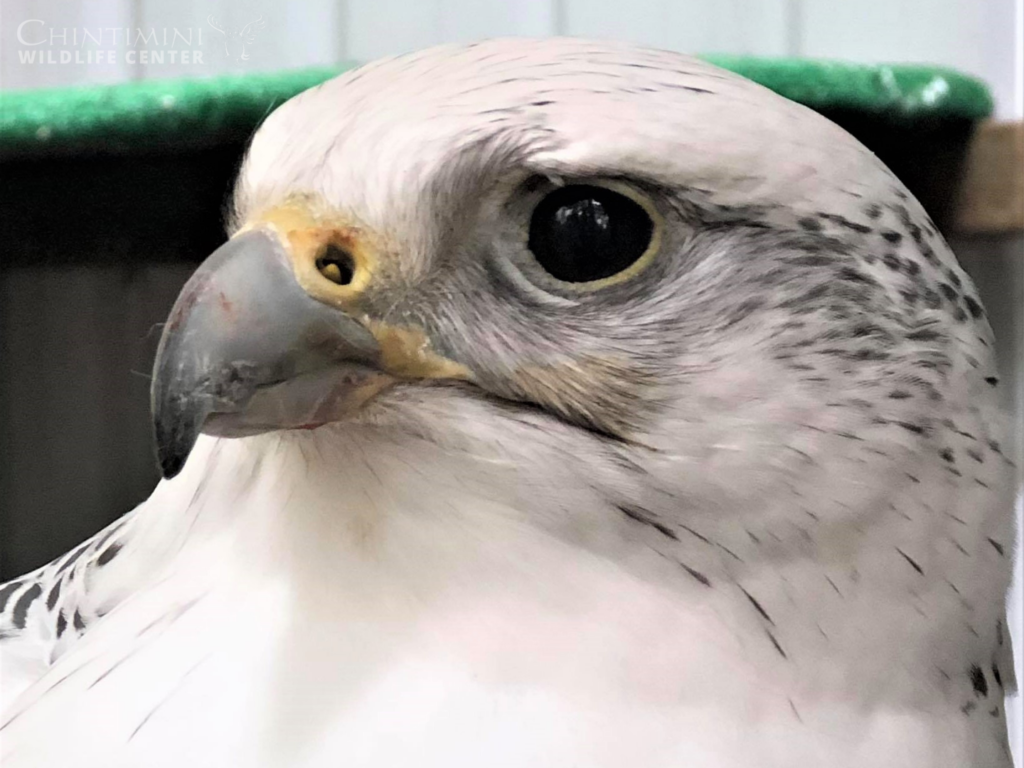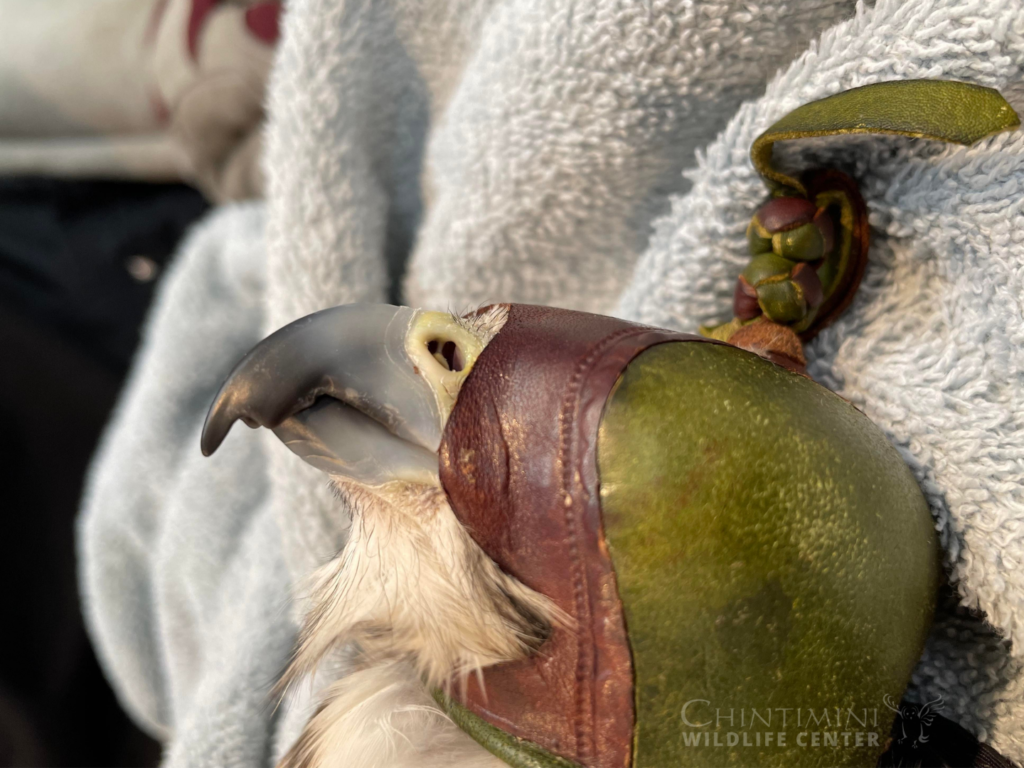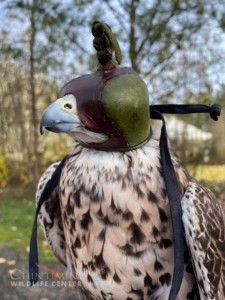Main Office: 541-230-1220 | Wildlife Hotline: 541-745-5324
Wildlife Hospital very busy: please call hotline before bringing in an animal
Falcon Beak Coping
Stories of wildlife rehabilitation through the lens of veterinary medicine told by Dr. Claire Peterson
Keeping our birds healthy is a very complex daily process, and yes, a bird “manicure” is occasionally a part of it!

Did you know that bird beaks grow continuously like fingernails? Bird beaks are made up of the same stuff as fingernails, called keratin! In the wild, birds are constantly using their beaks to tear open seeds, peck holes into trees, or, in the case of birds of prey, crack through bone or break the necks of their prey. Our education birds here at Chintimini are pampered and do not have to use their beaks to the extent that their wild counterparts would. So what do they do? We provide them with a beak-version of a manicure, called coping!

Today we coped our Gyrfalcon ambassador’s beak and talons (talons also grow continuously like fingernails or dog claws). Falcon beaks are very specialized compared to other birds of prey, which is why I wanted to share this process with you all. They have an extra notch in the top part of their beak called the tomial tooth. It’s not a real “tooth,” of course, but it definitely looks like one in the way the beak is shaped! They use this tomial tooth to sever the spinal cord of their prey after they catch it – ensuring a quick and humane death. The top notch aligns with the lower beak, creating a scissor-like effect that allows them to do so.
Sometimes when I cope a bird’s beak, I request to sedate the bird with anesthesia. Our ambassador Evie has a rather high-stress personality compared to some of our other birds, and since Gyrfalcons are the largest falcon species in the world, her beak is therefore large and rather thick. That means it’s not always a quick process for me to file it down, and of course, with a falcon’s unique anatomy, I want to do it right and keep the shape of her tomial tooth. Sedating her means the process is much less stressful, and I can pay more attention to getting the details of her anatomy correct. In some of these photos, Evie is asleep under anesthesia. I promise she woke up to a big meal and quickly forgave us!

In the first photo, you can see the notch of the tomial tooth, but it has overgrown way past her lower beak (mandible). That means the scissor action doesn’t work, and it’s likely a bit unwieldy for her to eat with in general. I don’t have a good picture of the lower beak because we were trying to move quickly, but it was also overgrown and starting to hit the underneath curve of her upper beak. This can eventually lead to major problems if not addressed promptly.
To do the actual coping, most people have their own process. Some people like to use an electric Dremel, but I prefer to use hand files. Dremels can spin so fast that they create a lot of heat, plus the noise can be more stressful for the birds if they are awake. I also don’t feel a Dremel can get as sharp of a corner as I sometimes want, so I like to do it the old-fashioned way!

First I trim off the tip of the beak with clippers, and then I trim back that tomial tooth with clippers as well. This has to be done very carefully, but it allows the “tooth” to break off with the natural fibers and direction of the beak if I snip in just the right place. After clipping, I use different shaped hand files to shape the beak and to smooth out any rough areas from the clippers. I’m always sure to put a good point back onto the beak, so the bird has an easy time tearing and eating their food.
Evie may not appreciate the spa day, but we all think she looks fabulous afterward!

I am including before and after photos of my Saker Falcon, Pita, who makes guest appearances at Chintimini! Since he’s also a falcon, he has a tomial tooth just like Evie. Pita is trained to a falconry device called a “hood” that helps keep him calm. The hood makes transporting falcons much less stressful – and it makes coping less stressful as well. Don’t worry, he also got a large meal afterward!
Occasionally, one of our wild patients at the center will need a beak trim, such as this Red-tailed Hawk. Sometimes this happens when a patient has to be with us for a long time due to a bad injury or illness that takes months to heal. Because they are on special supplements to help them heal, most notably supplements to grow back strong bones after a break, their beaks may grow faster than usual with all those extra minerals.
This beak trim was particularly satisfying! Once a wild bird is back out in the wild, their beak will wear down naturally again with all the natural behaviors a bird of prey does – including hunting, killing, and eating whole prey with bones and skulls. Out in the wild, birds have daily contact with all sorts of rocks, branches, and other surfaces that allow them to clean and hone their beak.


Keeping our birds healthy is a very complex daily process, and yes, a bird “manicure” is occasionally a part of it!
Dr. Claire Peterson is a Veterinarian, a Master Falconer, and an avid wildlife photographer. She has extensive training and knowledge of falconry, and holds legal permits to obtain, house, and train birds of prey.
